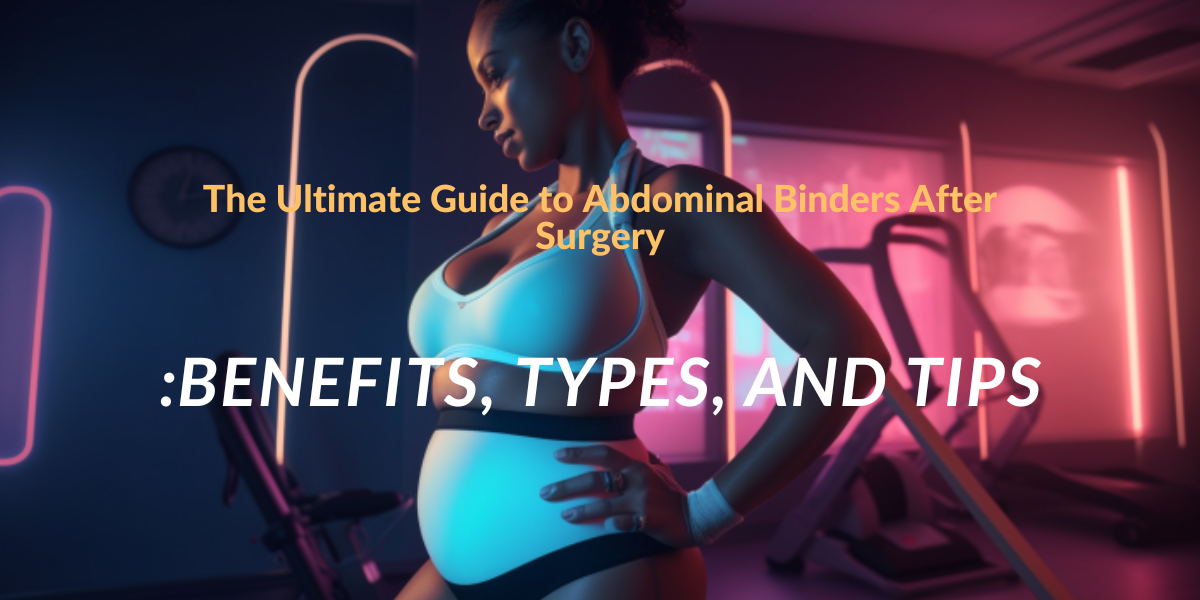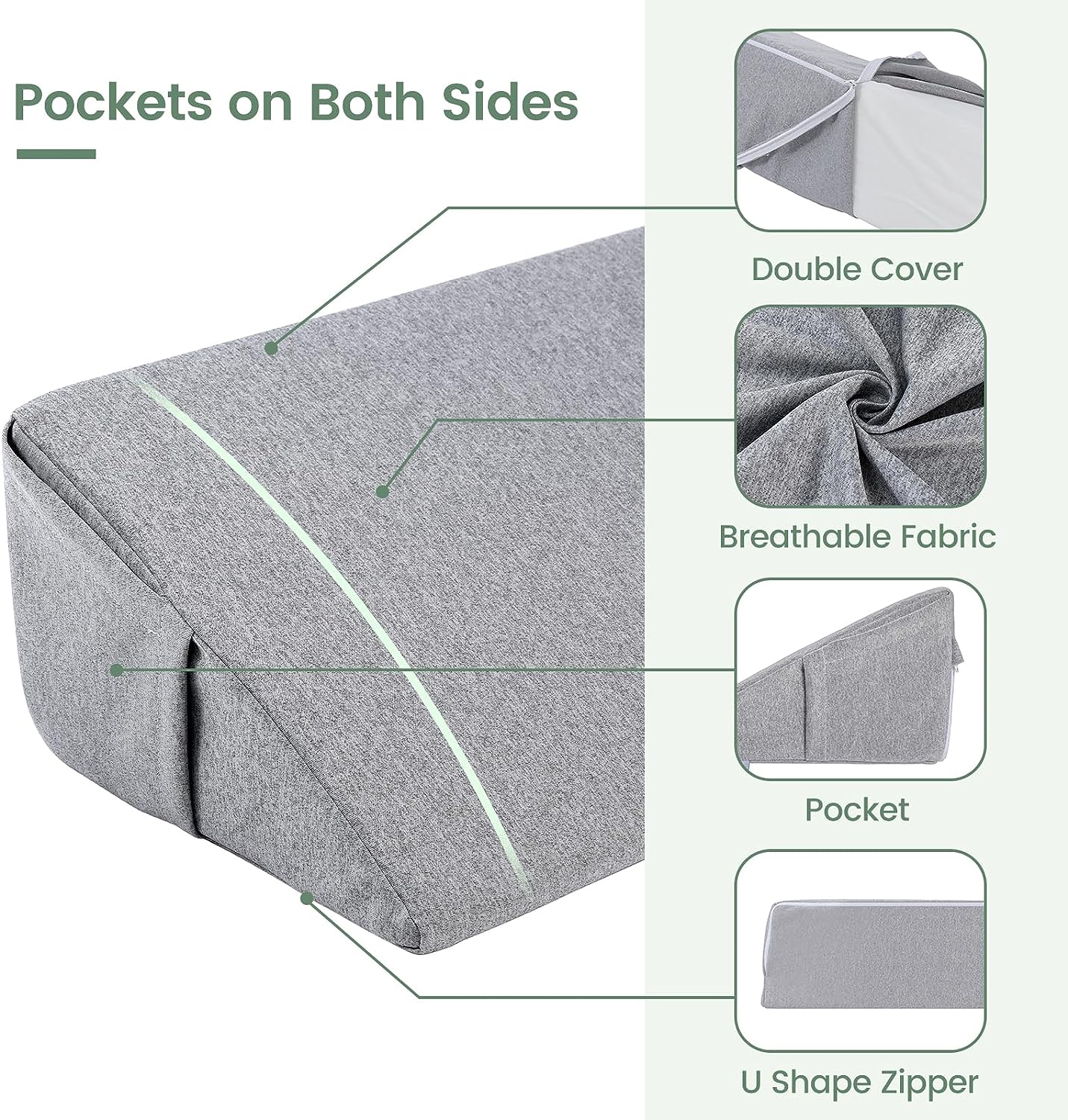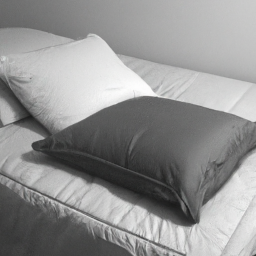Recovering from surgery can be a challenging process, but the right support can make all the difference. One such support is an abdominal binder, which can provide much-needed stability and relief after abdominal surgery. In this comprehensive guide, we’ll cover everything you need to know about abdominal binders, including their benefits, types, and tips for proper use. Plus, we’ll showcase some of the best abdominal binders available on the market today.
Understanding Abdominal Binders and Their Role in Post-Surgery Recovery
What is an Abdominal Binder?
An abdominal binder, also known as a post-surgery abdominal support or belly wrap, is a wide compression garment that wraps around your abdomen. It’s designed to provide support, stability, and compression to the abdominal area after surgery, helping to alleviate pain, reduce swelling, and promote healing.
Benefits of Abdominal Binders for Post-Operative Support
Abdominal binders offer numerous benefits after surgery, such as:
- Reducing pain and discomfort
- Providing support to weakened abdominal muscles
- Minimizing swelling and inflammation
- Improving blood circulation
- Promoting proper posture and body alignment
- Encouraging faster healing and recovery
Types of Abdominal Binders: Find the Right One for Your Needs
Surgical Abdominal Binders vs. Compression Garments
There are two main types of post-surgery abdominal support: surgical abdominal binders and compression garments. While both provide compression and support, surgical abdominal binders are specifically designed for post-surgery use and offer more targeted support for the abdominal area. Compression garments, on the other hand, may cover a larger area of the body and are often used for general compression purposes.
Abdominal Binder Materials: Breathable, Elastic, and Medical-Grade Options
When choosing an abdominal binder, consider the material it’s made from. Look for breathable, elastic, and medical-grade materials that provide the right balance between comfort and support. Some popular materials include:
- Cotton: Soft, breathable, and hypoallergenic
- Spandex: Stretchy and comfortable, providing a secure fit
- Nylon: Durable and lightweight, with moisture-wicking properties
- Neoprene: Provides firm support and retains heat for therapeutic benefits
Sizing and Adjustability: How to Choose the Perfect Fit
Proper sizing is crucial when selecting an abdominal binder. A binder that’s too tight can cause discomfort and restrict movement, while one that’s too loose won’t provide adequate support. To find the right size, measure your waist and hip circumference and consult the manufacturer’s sizing chart. Additionally, look for adjustable abdominal binders that allow you to customize the fit and compression level.
How to Wear and Care for Your Abdominal Binder After Surgery
Step-by-Step Guide to Wearing an Abdominal Binder
- Ensure the abdominal binder is clean and dry.
- Wrap the binder around your waist, making sure it covers the surgical area.
- Adjust the compression level as needed, ensuring it’s snug but not too tight.
- Fasten the binder securely with hooks, Velcro, or another closure system.
- Re-adjust the binder throughout the day as needed for optimal support and comfort.
When to Start Using an Abdominal Binder After Different Surgeries
It’s essential to consult your surgeon or healthcare provider for specific recommendations on when to start using an abdominal binder after surgery. In general, you
may begin wearing an abdominal binder immediately after surgery or within the first few days, depending on the procedure and your individual needs. For example, after a C-section, you may start using an abdominal binder as soon as you feel comfortable, while for hernia repair or tummy tuck surgeries, your doctor may recommend waiting a day or two.
Tips for Cleaning and Maintaining Your Abdominal Binder
Proper care and maintenance are essential to ensure the longevity and effectiveness of your abdominal binder. Follow these tips for cleaning and maintaining your binder:
- Always follow the manufacturer’s care instructions for cleaning and drying.
- Hand wash your binder with mild soap and warm water, or use a gentle cycle if machine washing is allowed.
- Air dry your binder, avoiding direct sunlight or heat sources.
- Inspect your binder regularly for signs of wear, such as fraying or loose stitching, and replace it as needed.
Do’s and Don’ts of Using an Abdominal Binder
Dos
- Consult your doctor or surgeon before using an abdominal binder.
- Choose the right size and material for your needs.
- Wear your binder consistently for the recommended duration.
- Adjust the compression level as needed for optimal support and comfort.
- Clean and maintain your binder according to the manufacturer’s instructions.
Don’ts
- Don’t wear your binder too tight, as it may restrict blood flow and cause discomfort.
- Don’t ignore signs of discomfort or pain while wearing your binder.
- Don’t wear your binder while sleeping, unless recommended by your doctor.
- Don’t wear a binder that shows signs of wear and tear, as it may not provide adequate support.
- Don’t rely solely on your abdominal binder for recovery; follow your doctor’s post-surgery care instructions and recommendations.
Frequently Asked Questions About Abdominal Binders
How Long Should You Wear an Abdominal Binder After Surgery?
The duration of wearing an abdominal binder varies depending on the type of surgery, the individual healing process, and doctor’s recommendations. In general, you may need to wear your binder for 2-6 weeks or until your doctor advises you to stop. Always follow your healthcare provider’s guidance regarding the duration of use.
Can You Wear an Abdominal Binder After a C-Section?
Yes, you can wear an abdominal binder after a C-section to provide support and alleviate pain. However, it’s essential to consult your doctor before using an abdominal binder to ensure it’s safe and appropriate for your specific needs.
Abdominal Binders for Postpartum, Hernia Repair, and Diastasis Recti Recovery
Abdominal binders can be beneficial for various post-surgery recovery processes, including postpartum, hernia repair, and diastasis recti. They provide support to weakened abdominal muscles, promote healing, and reduce pain and discomfort. Always consult your doctor before using an abdominal binder for these recovery purposes.
Best Abdominal Binder Picks from Amazon
To help you find the perfect abdominal binder, we’ve curated a list of three highly-rated options available on Amazon:
- Gepoetry Abdominal Board – This 360° abdominal board is designed to provide extra support and comfort for your waist and back after surgery. It offers 360° support and compression, adjustable sizing, and helps prevent fluid retention and irritation. The Gepoetry Abdominal Board is suitable for a wide range of waist sizes and ensures a comfortable and secure fit.
- Trendyline Abdominal Binder – Available in four sizes, this postpartum belly band is designed for short torso, balanced, and hourglass-shaped bodies. It features a comfortable, breathable, and durable fabric with built-in boning for lower back support. This binder is ideal for speeding up recovery after birth and can be worn for various everyday activities.
- Procare Premium Panel Elastic Binder – Ideal for providing compression and support after abdominal surgery, this binder is designed with multiple elastic support panels and features flannel lining to prevent rolling. The contact closure ensures easy adjustment and a proper fit. Made of latex-free elastic, the Procare Premium Panel Elastic Binder offers support for both men and women.
Remember to choose a binder that meets your specific needs, considering factors such as size, material, and type of surgery. Always consult your doctor or surgeon for personalized advice on using an abdominal binder, and follow their recommendations for optimal results.
Conclusion and final thoughts 💭
Abdominal binders can be a valuable tool in the post-surgery recovery process, offering support, pain relief, and promoting healing. By understanding the different types of binders available, how to wear and care for them, and selecting the right one for your needs, you can enhance your recovery experience. Always consult your doctor or surgeon for personalized advice on using an abdominal binder, and follow their recommendations for optimal results.



